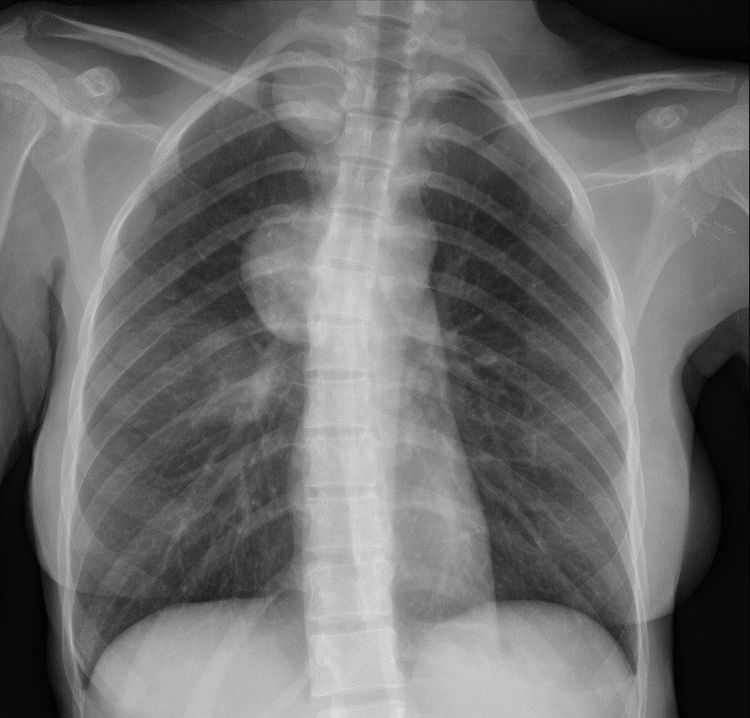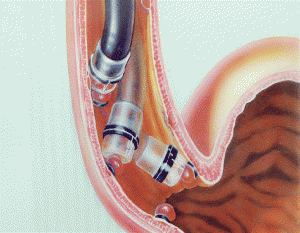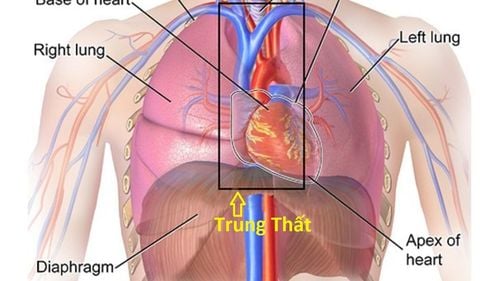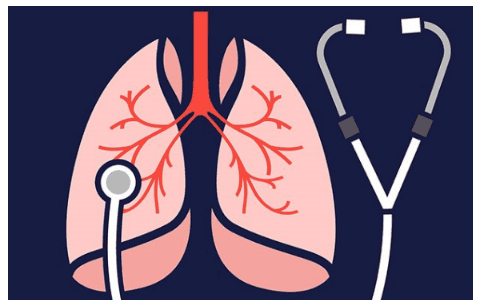This is an automatically translated article.
When detecting mediastinal cancer or benign mediastinal tumor, it is necessary to treat it early to avoid adverse effects on the lungs and surrounding organs.
1. Why does mediastinal tumor need early treatment?
Mediastinal tumors mainly form from germ cells or abnormally proliferating cells in thymus tissue, nerve tissue, and lymphatic tissue. Mediastinal tumors can be benign or malignant (cancer of the mediastinum).
In the early stages, the patient has almost no symptoms. However, if not diagnosed, detected and surgically removed in time, mediastinal tumors can become invasive, causing compression to the heart, lungs and large blood vessels, leading to obstructing the healing process. circulatory and respiratory.
In the later stages, patients often show symptoms including: chest pain, shortness of breath, weight loss, body weakness, coughing up blood, seriously affecting respiratory and circulatory function, making decline in quality of life.
If the mediastinal tumor is not detected and treated promptly, the tumor can metastasize to the pericardium and lungs, threatening the patient's life. Therefore, in order to treat and prevent mediastinal tumors, it is necessary to periodically examine and diagnose suspicious signs of the disease. Surgical resection is the most commonly used first-line treatment for mediastinal cancer.

Hình ảnh u trung thất trên phìm X-quang
2. Subjects who need surgery for mediastinal tumors
When detecting signs of benign mediastinal tumor or progressing to malignant cancer, mediastinal resection is essential to avoid complications affecting the lungs and nearby organs. Before that, the doctor needs to confirm whether a mediastinal tumor is benign or malignant by biopsy method (removing a piece of tumor for microscopic evaluation).
Treatment of mediastinal tumors in general depends on the severity of the disease and the patient's condition. Most cases of mediastinal tumors that require treatment are indicated for tumor removal, especially when there are signs of compression and complications occur, affecting the patient's airway. Some cases of melanoma may respond well to chemotherapy or radiation and do not require resection.
Tumor biopsies can be performed with minimally invasive methods and quick recovery. Meanwhile, surgical removal depends on the size and location of the tumor, the extent of damage to other structures in the chest, and the overall medical condition of the patient.
Almost every case of mediastinal tumor treatment requires early surgery, if there are no absolute contraindications. Surgery has both targeted treatment and has diagnostic significance in determining the tumor (in terms of location, tumor progression stage and histopathology), thereby helping to determine additional treatment options after surgery (using surgery). chemicals, irradiation, etc.).

Hầu như mọi trường hợp chữa trị u trung thất đều cần có chỉ định mổ sớm, nếu không có chống chỉ định tuyệt đối
3. Treatment of mediastinal tumor depends on tumor location
3.1. Thymoma Most mediastinal tumors in the thymus have indications for surgical treatment. In case the thymoma is accompanied by symptoms of severe myasthenia gravis, medical treatment is required first so that when surgery, the patient only has mild or moderate myasthenia gravis.
Treatment of cancer of the mediastinum can be carried out with the help of endotracheal anesthesia or anaesthesia. Surgery under anaesthesia has the potential to reduce postoperative respiratory complications more than surgery under anaesthesia. Accordingly, the most favorable incision is to open the sternum along the midline in the upper 2/3 or the entire sternum. Currently, with specially designed instruments, the opening and closing of the sternum for the patient is done quickly and relatively safely.
Surgery to cure mediastinal cancer in the thymus can achieve good results up to 95% depending on the stage of the disease and the histopathological nature of the malignancy.
3.2. Neuroma Neuromas often appear in the posterior mediastinum, so surgery is required through a posterior thoracotomy, under endotracheal anesthesia. Some cases of neuroendocrine tumors can be surgically removed by thoracoscopy.
Many cases of malignant neuroma cause strong invasion to surrounding organs and into the spinal cord, at this time surgery can only remove a part of abnormal cells.
3.3. Teratoma Tumors are common in the anterior mediastinum, so the most appropriate incision is the longitudinal mid-sternal opening of the patient. Although teratomas are usually benign, in many cases the tumor adheres a lot to the surrounding organs, so surgery will be difficult and easy to cause damage.
3.4. Intrathoracic goiter There are 2 types of goiter:
Goiter-mediastinal goiter: This is when the goiter has a palpable part of the neck (usually the upper pole). In this situation, the blood vessels of the thyroid gland still originate as in a normal person, so the goiter can be removed through an incision in the neck; Intramediastinal goiter: This is less common, occurs when the entire goiter is located in the mediastinum (usually in the anterior mediastinum, sometimes in the middle or posterior mediastinum). At this time, it is necessary to open the sternum in the midline to ensure the safe and thorough removal of the goiter. Previously, surgery to treat mediastinal tumors was often performed by open surgery because mediastinoscopy is a relatively difficult technique, requiring experienced doctors, helping patients not need to open the chest. too big, little blood loss. Currently, with the development of medicine, laparoscopic surgery is more and more widely applied, helping to completely remove the tumor with small incisions, minimizing the risk of postoperative complications.
Vinmec International General Hospital has full professional qualifications and technical means to effectively implement the treatment methods for mediastinal tumors. Here, there is a team of well-trained and experienced Respiratory Endocrinologists, a system of complete and modern medical equipment, professional service quality, effective diagnosis and treatment. high value.
For detailed advice on mediastinal tumor treatment methods as well as the medical examination and treatment process at Vinmec, please come directly to Vinmec health system or register for an online examination HERE.
MORE:
Pregnant while undergoing treatment for goiter, what to do? Common diseases of the thyroid gland and treatment How many types of goiter?













